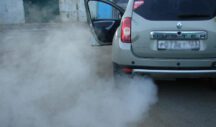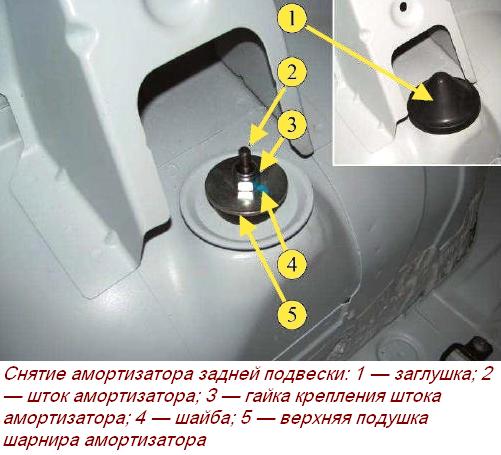
White smoke from the exhaust pipe of a gasoline engine
The normal exhaust of a modern gasoline engine is colorless. its correct functioning guarantees the transparency of gases, without soot. However, sometimes you have to observe the exit from the muffler of thick white or gray smoke. The appearance of the latter is associated with oil burnout, but the nature of the appearance of white smoke is different.
Low temperature
Sometimes what we think of as smoke is actually water vapor (or to be more precise in terms of physics, its condensing phase - fog). This manifests itself in the cold season due to the sharp cooling of hot exhaust gases in the fresh air and is considered the norm, because a certain percentage of moisture is always present in the atmosphere. And the colder it is outside, the more noticeable it is, like steam from the mouth.

In addition, motorists most often do not realize that condensation accumulates from the temperature difference in the muffler of their car. After starting the power unit, the muffler heats up, the evaporation process begins. As a result, steam can escape even when it is warm. The reason for the appearance of condensation is frequent short trips, during which the system does not have time to warm up enough. Because of this, water accumulates (up to a liter or more per season!); sometimes you can even observe how it drips from the pipe when the engine is running.
It is simple to fight this scourge: it is only necessary to make long runs once a week, at least half an hour, and preferably an hour. As a last resort, warm up the engine for a longer time specifically in order to evaporate moisture from the muffler.
Along with this, white smoke, unfortunately, is also an indicator of serious malfunctions.
Technical breakdowns and their causes
In this case, regardless of the ambient conditions, it is white smoke that is emitted from the exhaust pipe, i.e. combustion products, and the level of the coolant is constantly decreasing (it has to be added daily). The frequency of rotation of the crankshaft jumps in the range of 800-1200 rpm.
We'll have to promptly contact a car service, otherwise a seemingly insignificant malfunction may soon turn into a major overhaul. This is due to one of three factors:
- Leaking coolant cylinder.
- Injector defects.
- Substandard, dirty fuel.
- Filters problem.
The first option is the most common. The coolant enters the combustion chamber, evaporates, and then enters the muffler. This is highly undesirable (or rather unacceptable), since along the way, there is a physical interaction and a chemical reaction with oil, which loses its functional properties, which is why it must be replaced.

The engine housing is divided into a block and a cylinder head, between which the gasket rests, and also circulates the working fluid that cools the unit. The cavities of the cooling system and the cylinder must be hermetically sealed between each other. If everything is in order and there are no leaks, antifreeze will not get into the cylinder. But with an unprofessional installation of the block head or with its deformation, deflections and leakage are not excluded.
Therefore, you should clearly find out what exactly is happening with the motor - antifreeze is leaving or there is ordinary condensation.
What actions need to be taken?
- It is necessary to remove the dipstick, checking the amount of grease and its condition. Changes in viscosity, whitish color indicate the presence of moisture in it. In the expansion tank, on the surface of the coolant, you can see an iridescent film with a smell characteristic of oil products. By the presence and absence of carbon deposits on the candle, motorists will also learn about the details they are interested in. For example, if it is clean or completely damp, then water somehow still gets into the cylinder.
- A white napkin can also be used as an indicator during the examination. They bring it to the exhaust pipe of a running car and hold it there for half a minute. If condensed steam comes out, the paper will remain clean, if there is oil there, a characteristic grease will remain, and if antifreeze leaks out, the stains will have a bluish-yellow tint, moreover, with a sour smell.
The indicated indirect signs are quite enough to make a decision to open the engine and search for an obvious defect in it. Experience shows that liquid can flow through a leaky gasket or a crack in the body of the body. If the gasket is punctured, in addition to smoke, "triplet" will also appear. And with an impressive crack, the further operation of the car will inevitably lead to a water hammer, because sooner or later the liquid will begin to accumulate in the above-piston cavity.
Looking for cracks in the most artisanal way, plus in unprepared conditions, is a thankless task, therefore it is better to contact a service station, especially since it is not easy to detect a microcrack: special diagnostics are required. However, if for some reason this is not possible, first inspect the outer surface of the cylinder head and the block itself, and then the surface of the combustion chamber, as well as the place of the intake-exhaust valves.
And we must always remember: eliminating the symptoms that lead to the appearance of smoke is not enough to solve the problem of engine overheating. That is, it is imperative to determine and eliminate the cause of the breakdown of the cooling system.
You should also not neglect the last, fourth factor. We are talking about worn out (clogged) and worn out air filters, in which the smoke of gases increases noticeably. This is rare, but it happens.
In more detail: Causes of white smoke from the exhaust pipe.

